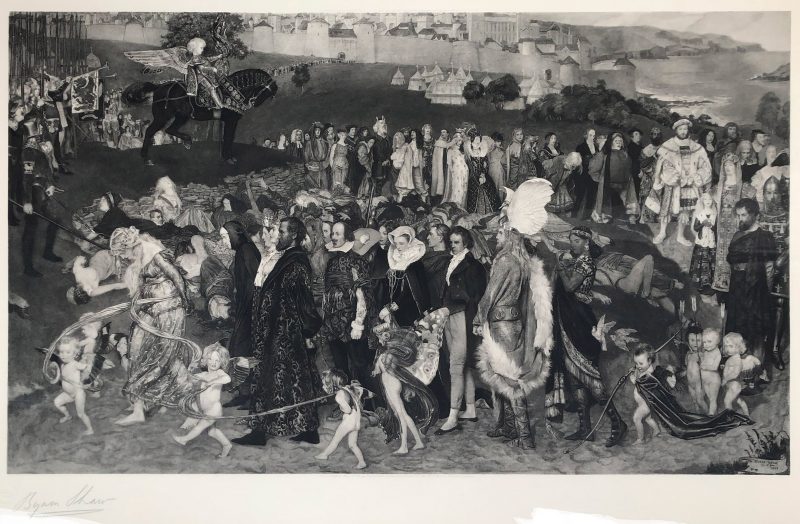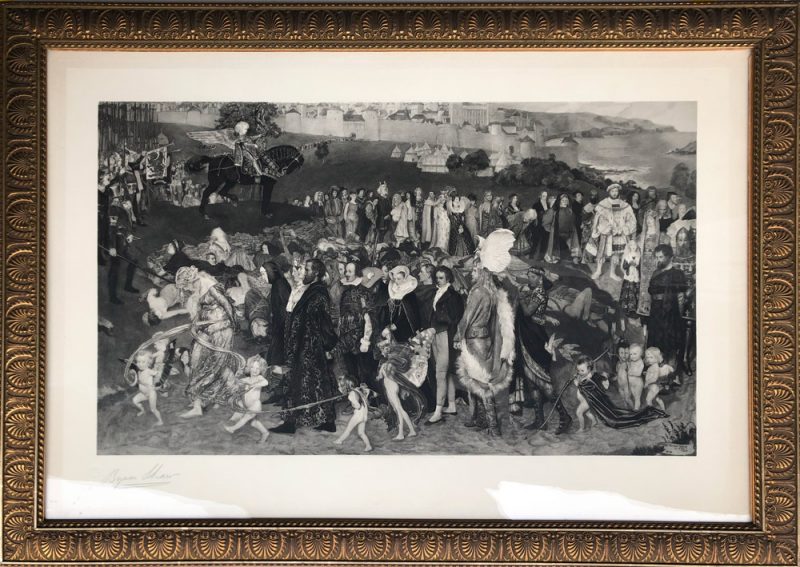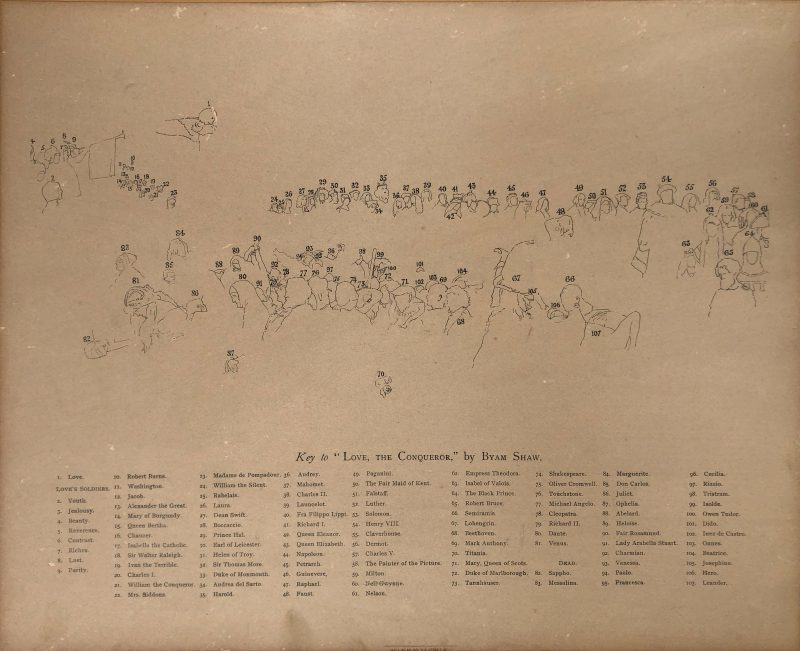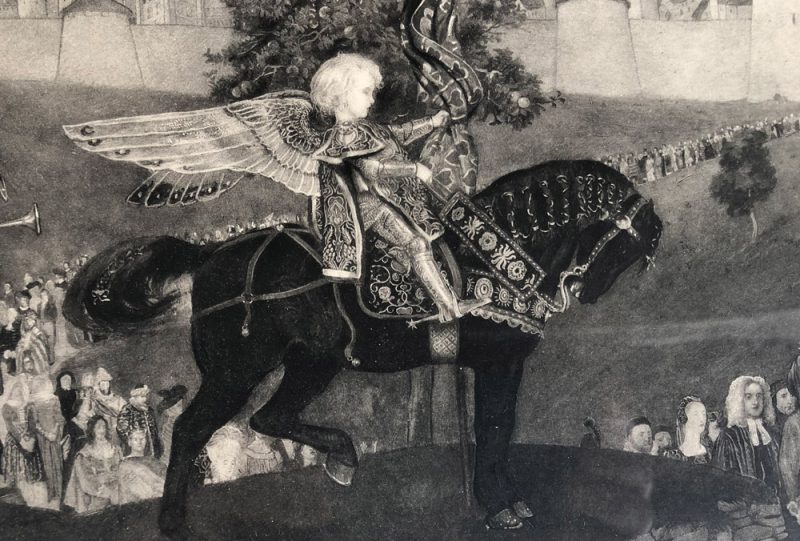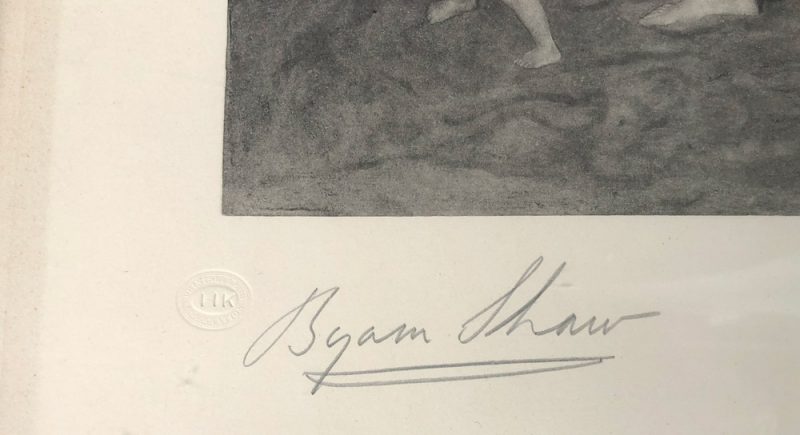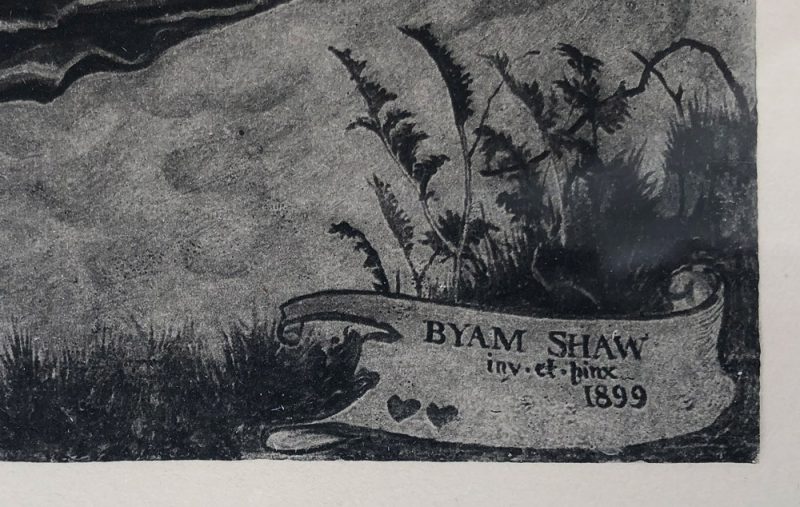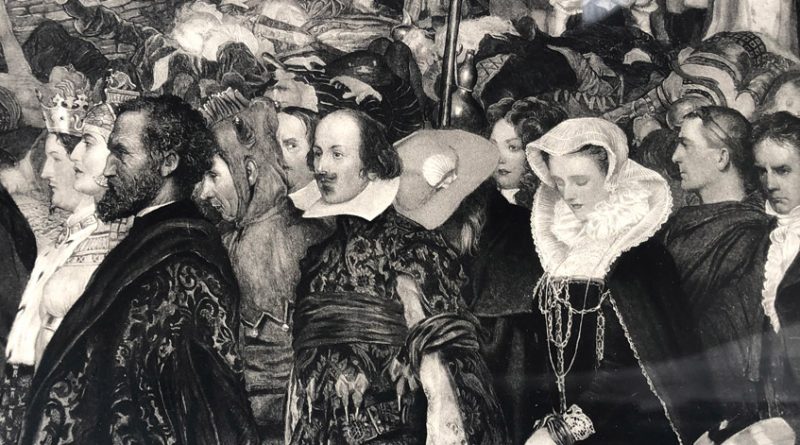Love the Conqueror 1899 Pre-Raphaelite Engraving by Byam Shaw
Byam Shaw (British, 1872 – 1919)
“LOVE THE CONQUEROR
signed and dated 1899
70 x 99 cm
Framed original signed Pre-Raphaelite engraving by the original artist after his painting.
Rex Vicat Cole in his biography “The Art & Life of Byam Shaw” described the painting’s allegorical subject: “The World, represented by a walled city, has capitulated to Love the Conqueror astride his horse. His soldiers-Youth and Beauty – who won his battles; those who had been wounded, those who had been captured, and those who had died in the fight with him. Little Cupid more powerful than the great ones in history. Rich and poor, the learned and the ignorant, the successful and the unfortunate, all coming under his sway.”
Our engraving includes a legend identifying all one hundred and seven figures in this image. The procession of figures is led by the draped figure of Venus. Among the supporters of Cupid are warriors which are identified by arm-bands as personifications of “Youth” and “Jealousy”, and trumpeters with banners lettered with the words “Lust” and “Purity”. Led by Venus the procession includes: Cleopatra, Faust, Michael Angelo, Fra Lippo, Andrea del Sarto, Flora Macdonald, Touchstone, Henry I, Richard II, Arthur, Launcelot, Guinevere, Elaine, Paris, Helen, Beatrice, Benedict, Shakespeare, Chaucer, Tannhauser, Rosalind, Hamlet, Isabella, Goethe, Titania, Bottom, Paolo, Francesca, Romeo, Juliet, Dante, Fair Rosamond, Claudio, Isabella, Leander, Ophelia, Lorenzo, Messalina, Marguerite, Don Carlos, Rizzio, Pizarro, Lohengrin and Byam Shaw himself.
Based on a Monumental Oil on Canvas
“Love the Conqueror” is a monumental oil on canvas painting (74 x 126 inches). Completed in 1899 it was originally bought by Shaw’s dealers Dowdeswell and Dowdeswell and is today in a private collection.
Byam Shaw
Shaw was born in India where his father was a legal official. The family returned to England in 1878 or 1879. From the beginning, and throughout his career, he was strongly influenced by Pre-Raphaelite painting, poetry and design.
